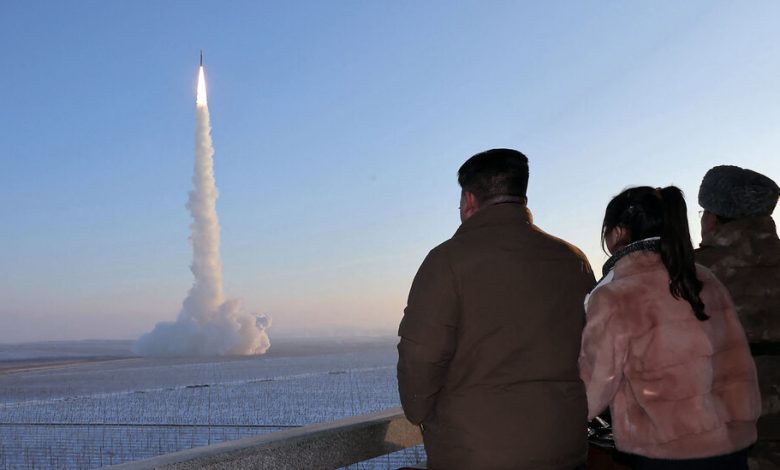North Korea’s New Reactor Raises Fears of Increased Plutonium Production

In what would be a fresh breach of United Nations sanctions, a new reactor in North Korea’s main nuclear complex appears to have gone into operation, providing the country with a potential source of additional plutonium for its growing nuclear arsenal, according to the United Nations’ nuclear watchdog.
Since mid-October, the International Atomic Energy Agency has observed a strong water outflow from the cooling system of the new light-water reactor, or L.W.R., that North Korea has been building in Yongbyon, north of Pyongyang, Rafael Grossi, the director general of the agency, said in a statement on Thursday.
“The discharge of warm water is indicative that the reactor has reached criticality,” Mr. Grossi said. “The L.W.R., like any nuclear reactor, can produce plutonium in its irradiated fuel, which can be separated during reprocessing, so this is a cause for concern.”
The observations detailed in Mr. Grossi’s statement are another strong indication that North Korea has been accelerating its nuclear weapons program while its talks with the United States remain stalled and while the Biden administration is preoccupied with other crises around the world, including the wars in Ukraine and the Gaza Strip.
The North’s new reactor violates U.N. Security Council resolutions that outlawed its nuclear program, as well as its development of ballistic missiles. But the Council has been unable to impose new sanctions against North Korea following recent ballistic missile tests because China and Russia vetoed them.
The atomic energy agency has no direct access to Yongbyon since North Korea expelled its monitors from the facility in 2009. But the agency, United States officials and private think tanks have been closely monitoring the sprawling complex, using satellite imagery and other technology.
They have reported increased activity there since the North’s leader, Kim Jong-un, vowed to expand his nuclear arsenal in both “quality and quantity” after the collapse of his direct diplomacy with President Donald J. Trump in 2019.
Yongbyon is home to North Korea’s Soviet-designed five-megawatt nuclear reactor, from whose spent fuel the country extracted plutonium to build atomic bombs. The complex also includes a centrifuge plant where the country is believed to enrich uranium for another type of fuel for nuclear warheads.
North Korea has been building a new and bigger light-water reactor in Yongbyon since 2010. The analysts have closely watched the progress of the construction because of the reactor’s potential of yielding plutonium.
The new light-water reactor probably began operating in early October, according to an online posting on Thursday by Jeffrey Lewis and David Schmerler, researchers at the James Martin Center for Nonproliferation Studies.
North Korea’s plans to increase its supply of nuclear weapons fuel included adding more centrifuges to produce weapons-grade enriched uranium and starting the light-water reactor at Yongbyon, which has been years behind schedule, said David Albright of the Washington-based Institute for Science and International Security.
The new reactor “could allow a surge in plutonium quantities” at an estimated rate of 20 kilograms (44 pounds) of plutonium per year, a rate four to five times that of the old five-megawatt reactor, Mr. Albright wrote in April.
Over the decades, North Korea stopped and restarted activity at Yongbyon, the birthplace of its nuclear weapons program, depending on progress in talks with Washington. Successive United States administrations have tried but failed to shut the complex down completely.
During his negotiations with Mr. Trump in 2019, Mr. Kim offered to dismantle the Yongbyon complex and, in return, demanded that the United States lift United Nations sanctions imposed since 2016, including a ban on crucial exports like coal, iron ore, fish and textiles. The talks collapsed when Mr. Trump rejected the offer, demanding a much broader rollback in North Korea’s nuclear weapons program, including its nuclear warheads and long-range missiles.
After the collapse of those talks, the I.A.E.A. reported that North Korea appeared to have restarted its five-megawatt reactor in Yongbyon, as well as resumed extraction of plutonium from the reactor’s spent fuel. The country has also increased its missile tests, including the launching of an intercontinental ballistic missile on Monday.
North Korea has conducted six underground nuclear tests since 2006. Activity at its nuclear test site at Punggye-ri indicated that the country can resume nuclear weapon testing any time Mr. Kim wants, South Korean officials have said.




